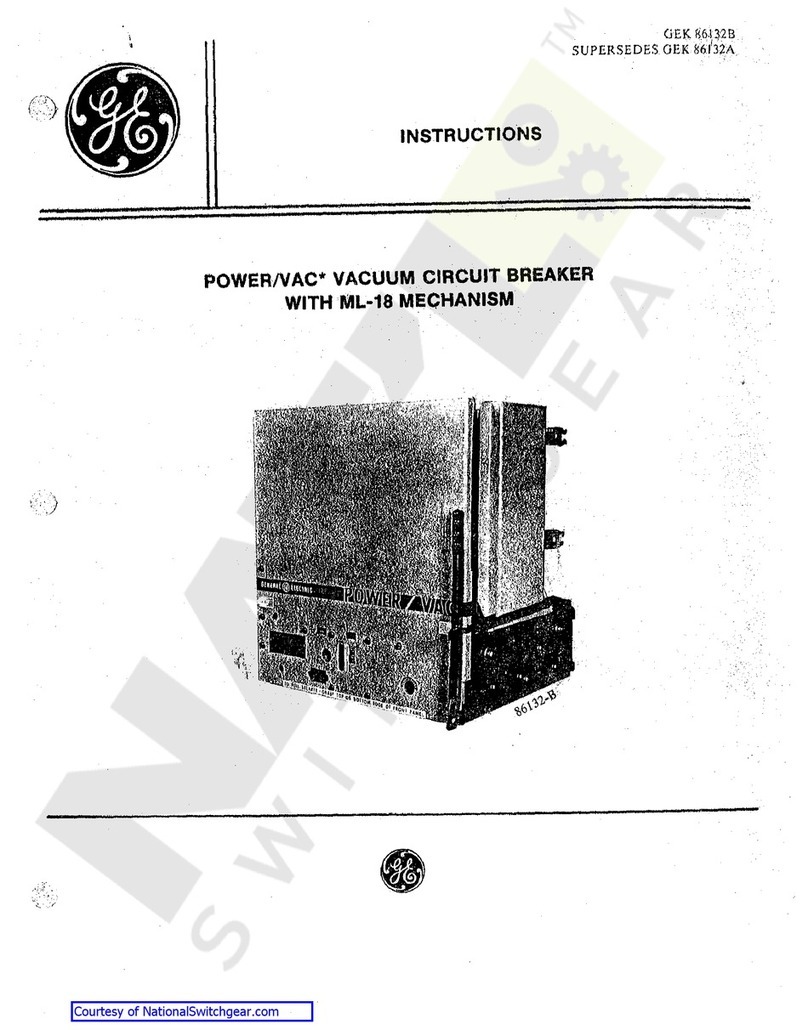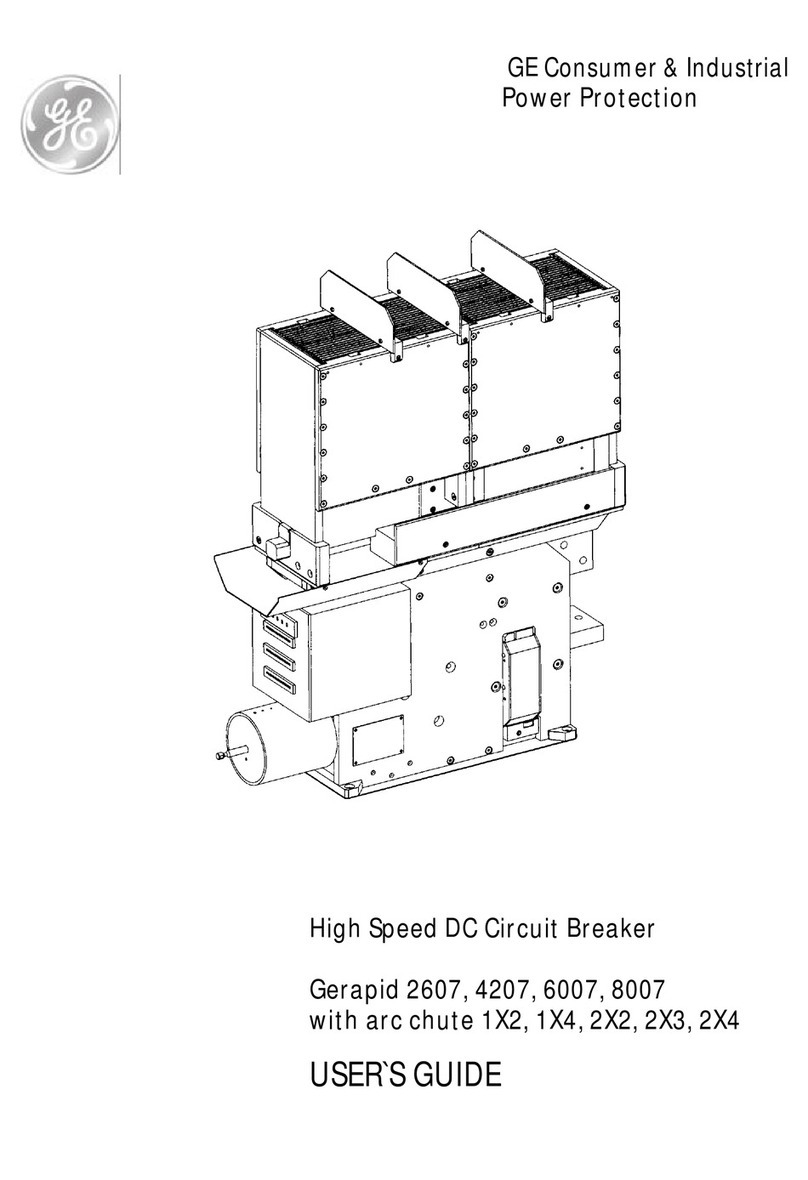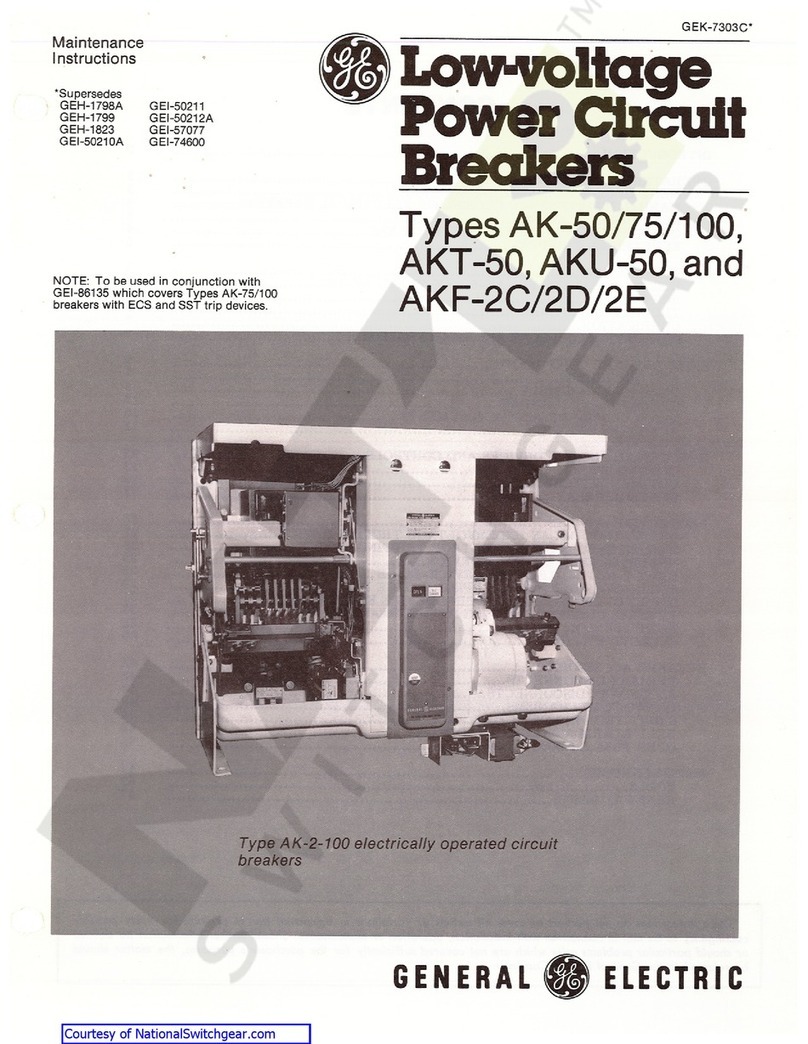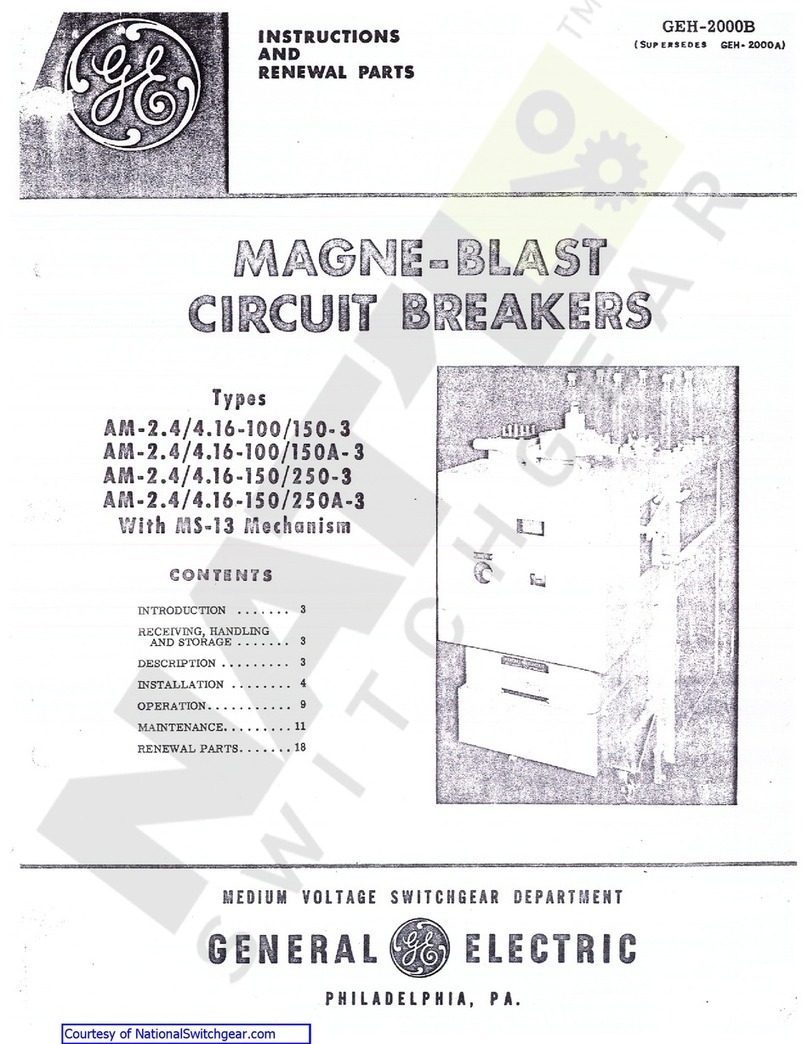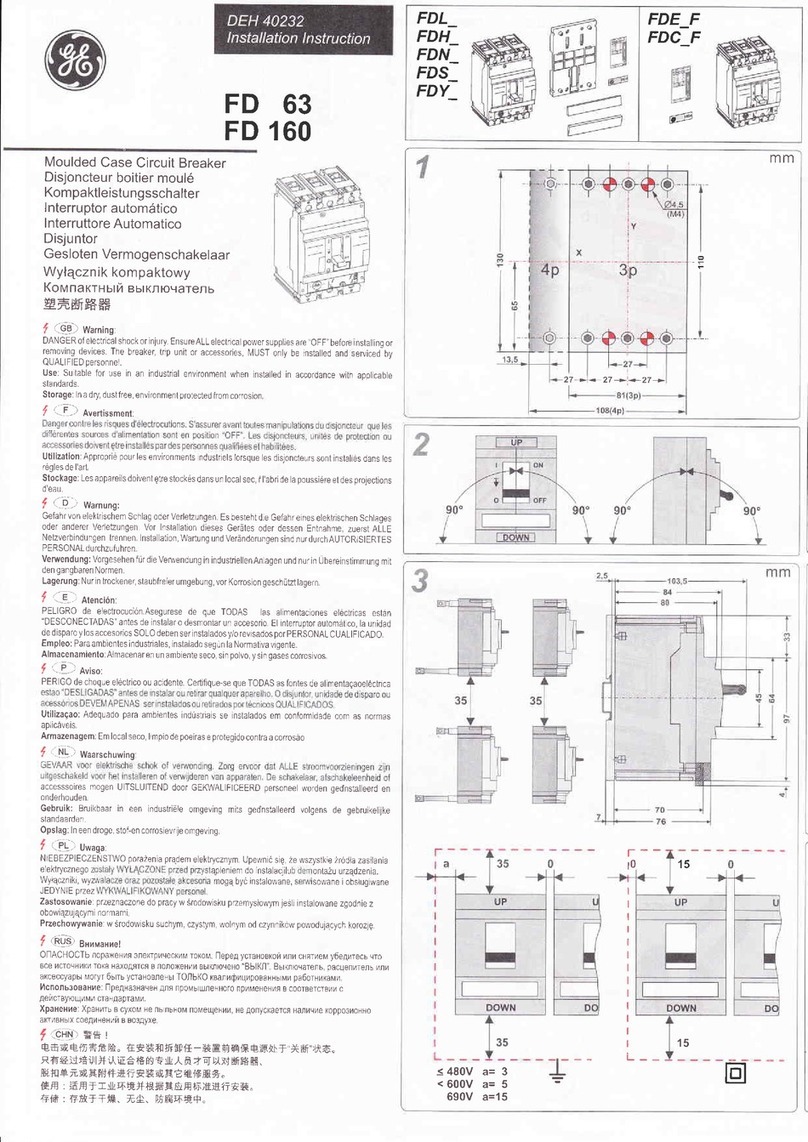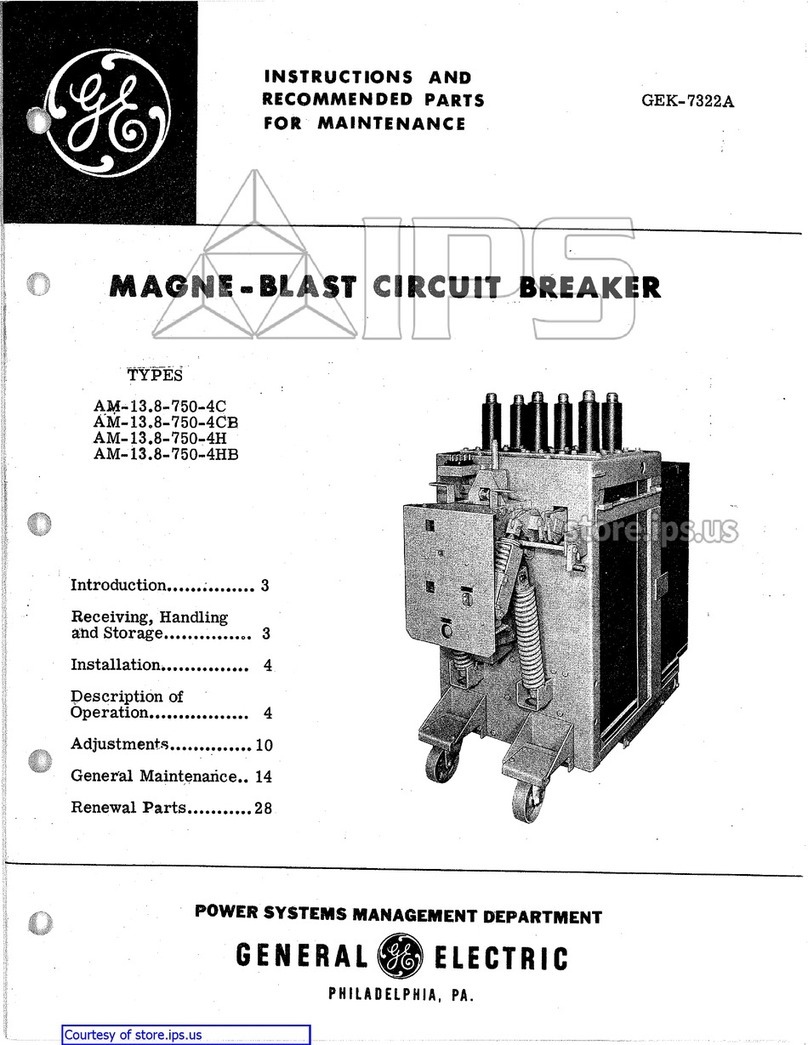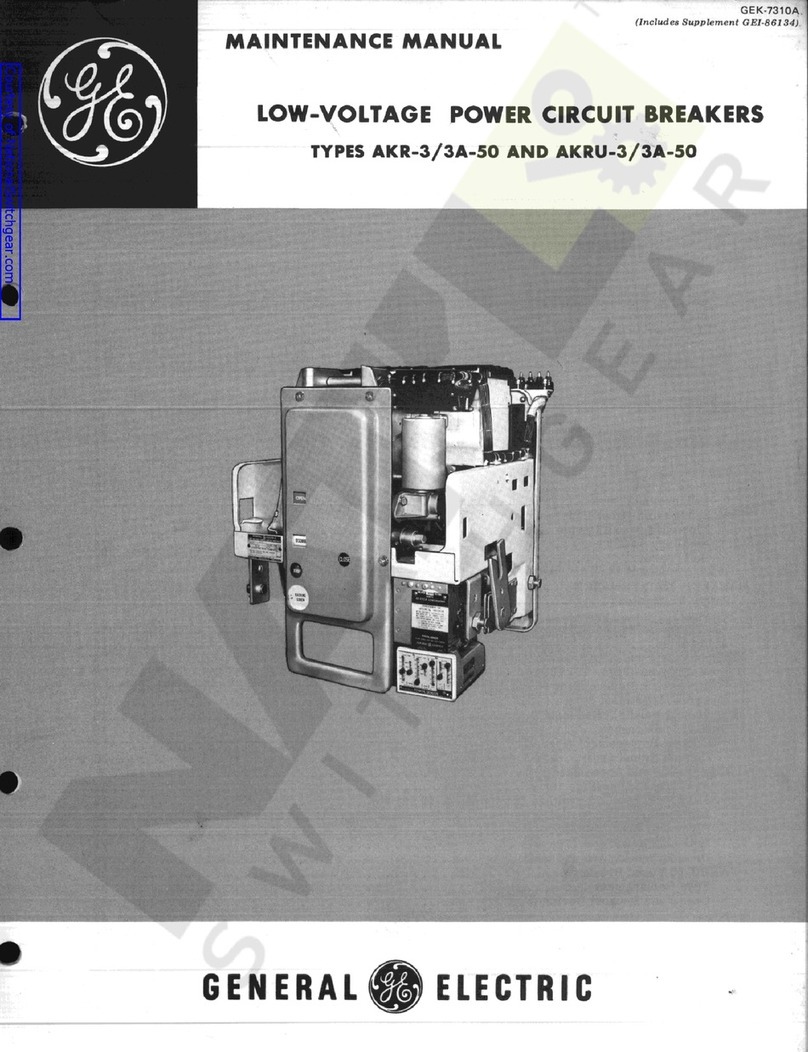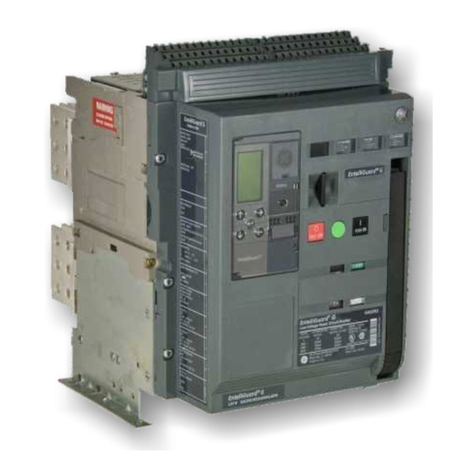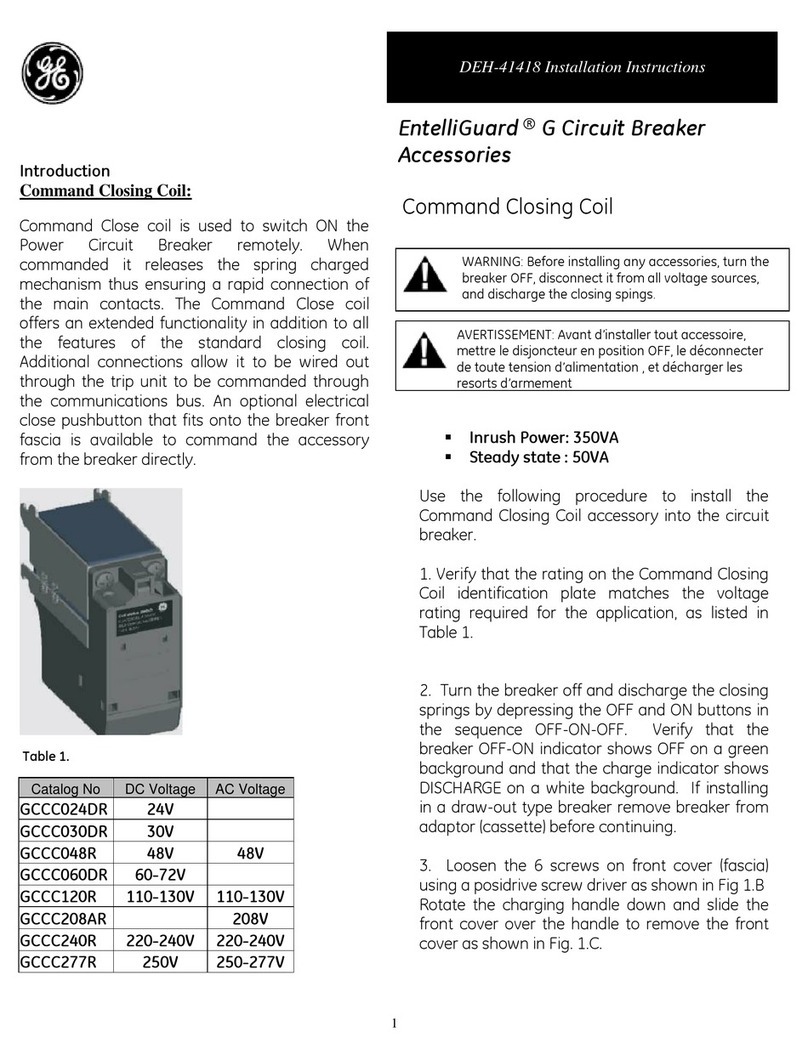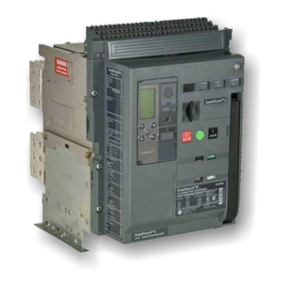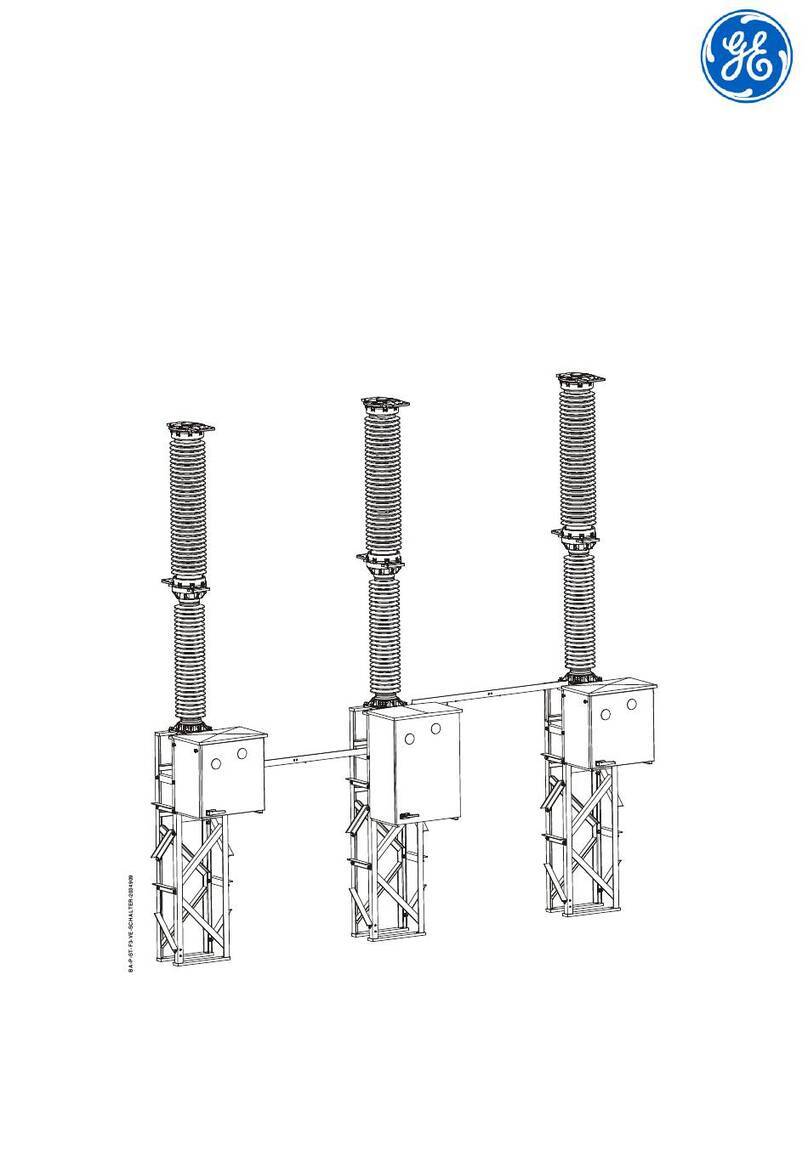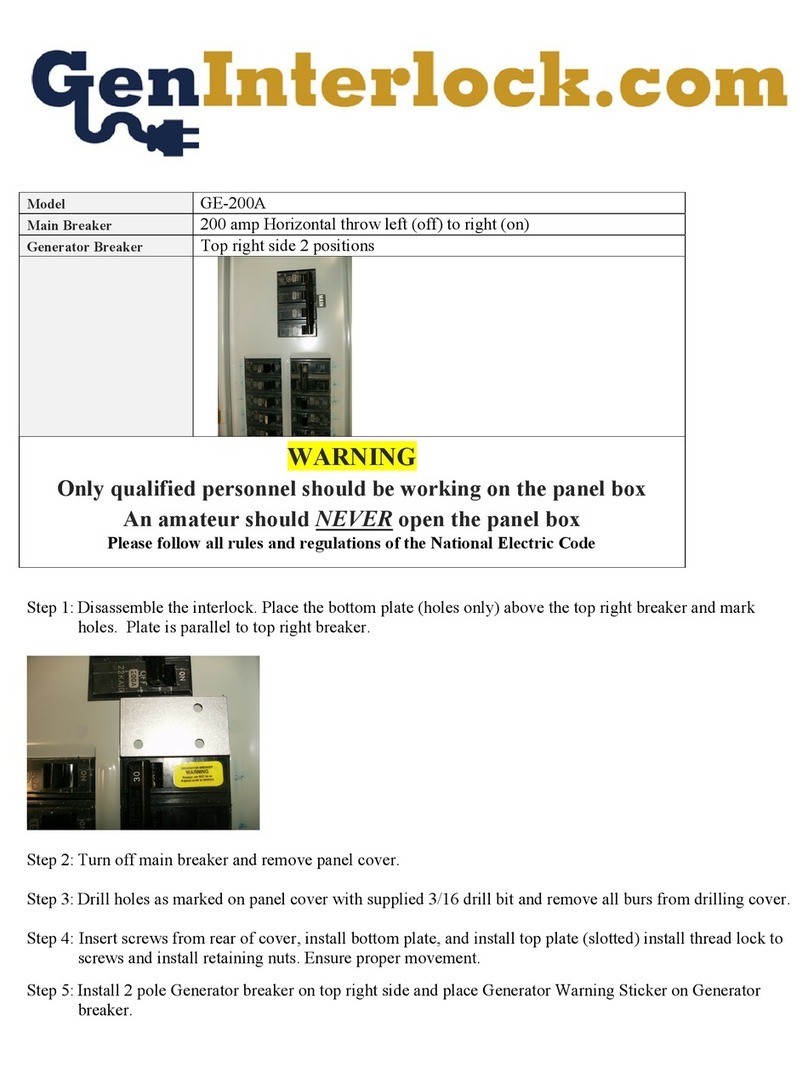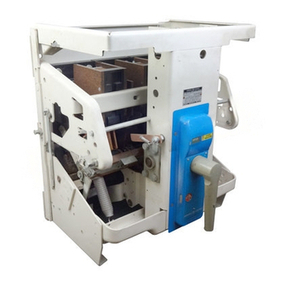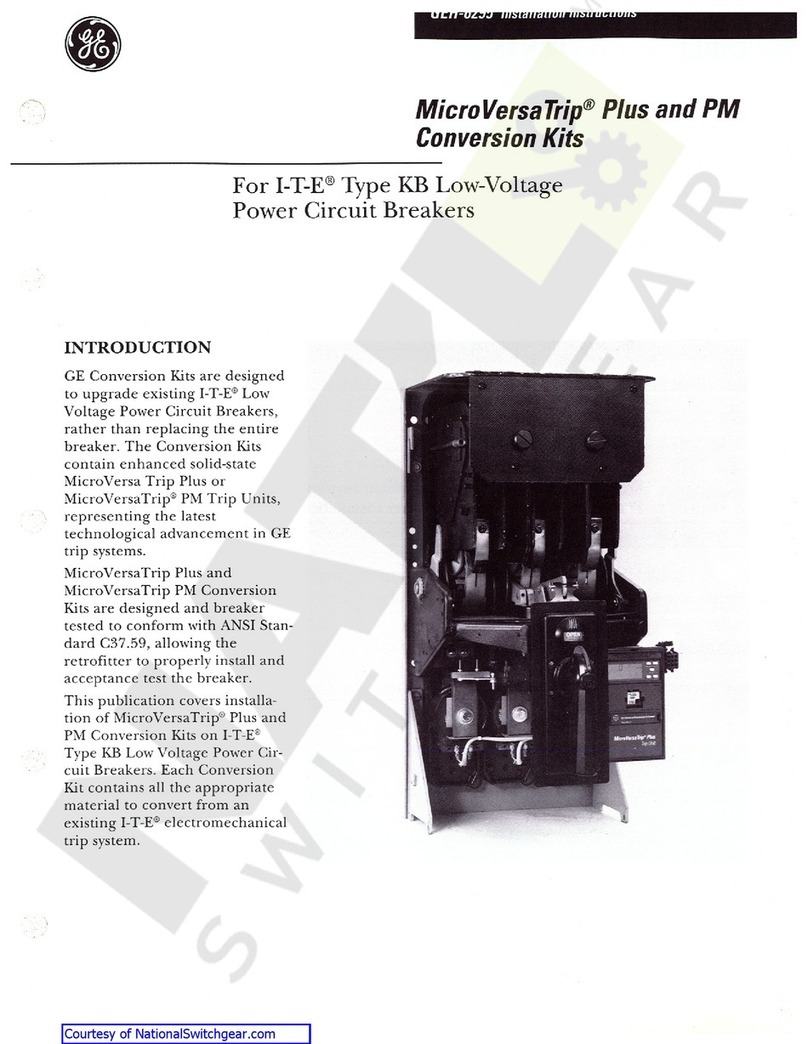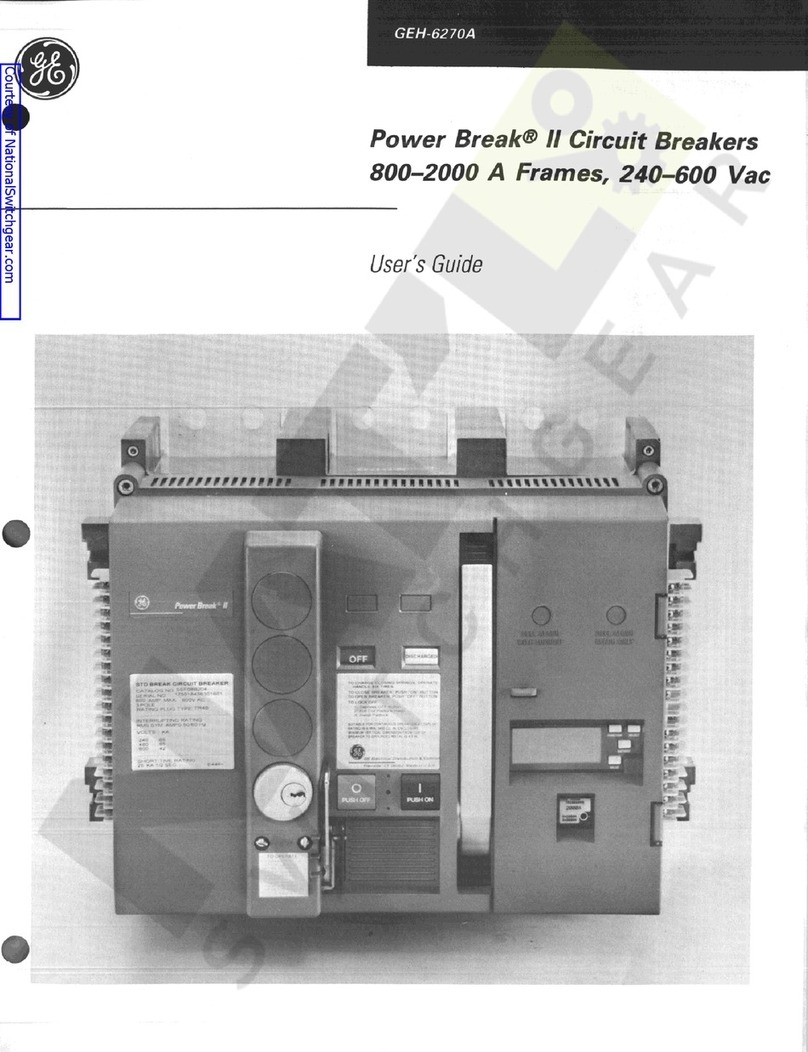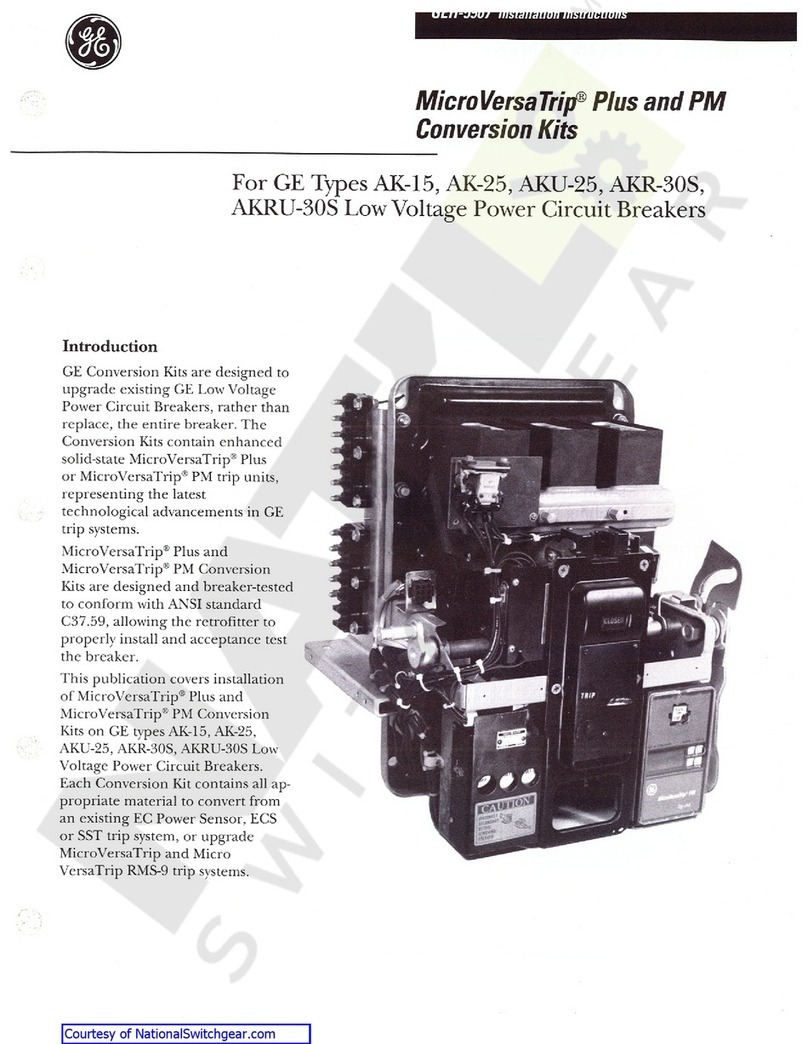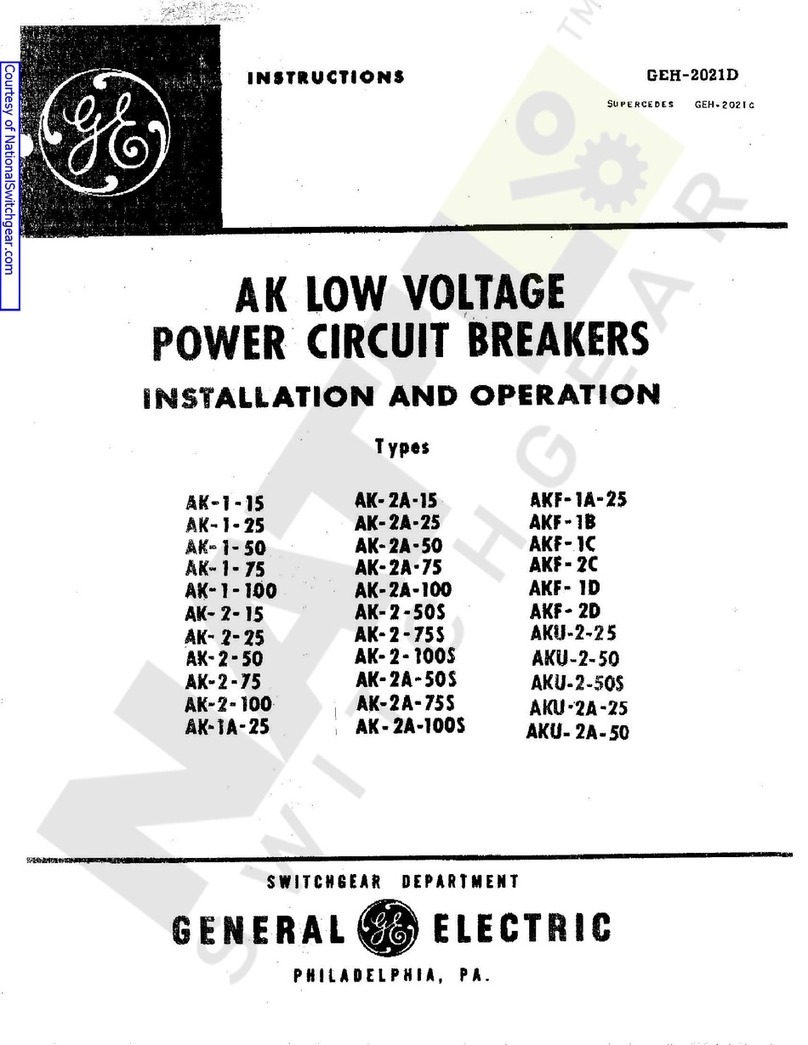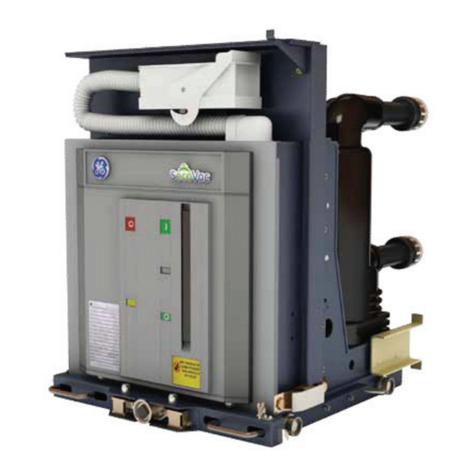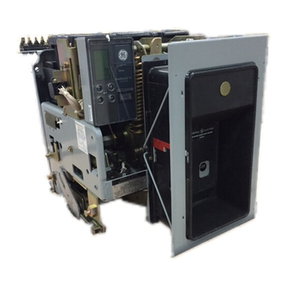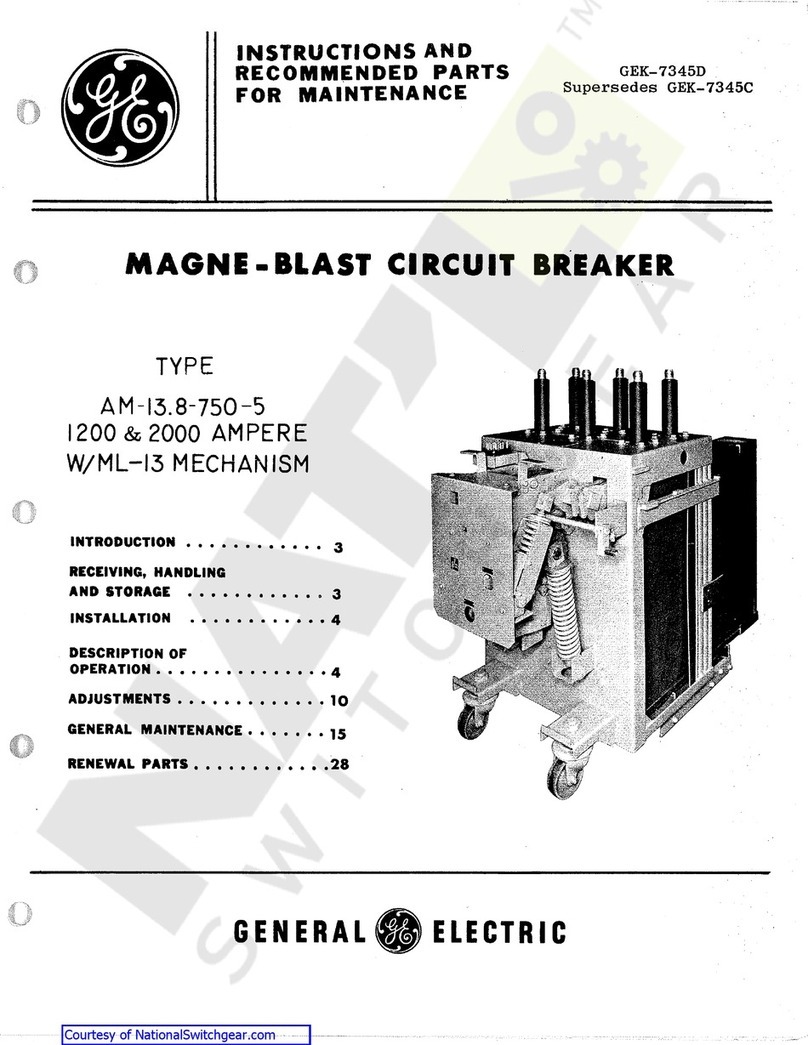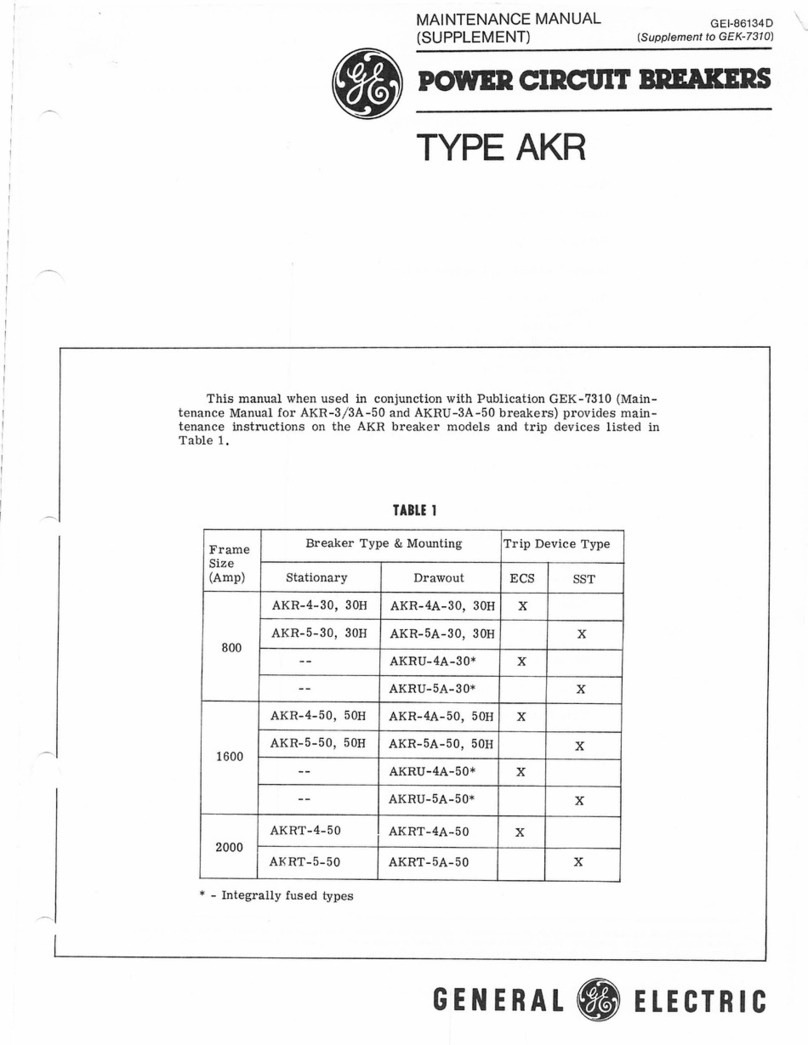
DEH-41304C EntelliGuard® G Circuit Breaker
13 March 14 Table of Contents
©2012 General Electric All Rights Reserved 5
CLOSING PROCEDURE .....................................................................................................................................................................................................21
CONDITIONS WHEN CLOSING CANNOT OCCUR ................................................................................................................................................21
CIRCUIT BREAKER OPENING PROCEDURE.............................................................................................................................................................21
SECTION 5 –LOCKS AND INTERLOCKS
GENERAL INFORMATION ................................................................................................................................................................................................22
CIRCUIT BREAKER FRONT PANEL LOCKING ..........................................................................................................................................................22
Pushbutton Locking ..........................................................................................................................................................................................22
Key Lock for Breaker Trip Free Condition ..............................................................................................................................................23
DRAWOUT CASSETTE FRONT PANEL LOCKING...................................................................................................................................................23
Security Locking..................................................................................................................................................................................................23
Isolation Shutters Locking (If Installed) ...................................................................................................................................................23
Door Interlock Installation .............................................................................................................................................................................24
KEY LOCKS AND INSTALLATION..................................................................................................................................................................................25
TWO-BREAKER CABLE INTERLOCK INSTALLATION ...........................................................................................................................................25
Vertical Mounting...............................................................................................................................................................................................25
Horizontal Mounting.........................................................................................................................................................................................26
SAFETY SHUTTERS INSTALLATION.............................................................................................................................................................................26
Table 5.1: Fixed-Mounted Circuit Breaker Locking...........................................................................................................................26
Table 5.2: Drawout Circuit Breaker Locking.........................................................................................................................................26
SECTION 6 –ACCESSORIES DESCRIPTION
GENERAL INFORMATION ................................................................................................................................................................................................27
INDIVIDUAL ACCESSORIES.............................................................................................................................................................................................27
Motorized Spring Charging Unit .................................................................................................................................................................27
Table 6.1. Motor Operators ..............................................................................................................................................................27
Circuit Breaker Closing Coils –Standard and Commanded........................................................................................................28
Table 6.2. Closing Coil Characteristics .......................................................................................................................................28
Command Operation Module......................................................................................................................................................................28
Shunt Trip (ST) ......................................................................................................................................................................................................28
Table 6.3. Extended Range Shunt Trip for UL Ground Fault and ANSI DC Rating Applications ...................28
Status Indication Switch (Coil Signaling Contact)..............................................................................................................................28
Table 6.4. Coil Signaling Contact Module .................................................................................................................................28
Under Voltage Release (UVR) with Fixed Time Delay.......................................................................................................................28
Table 6.5. UVR Operating Characteristics ................................................................................................................................29
Time Delay Module (TDM) for UVR (Externally Mounted) ...............................................................................................................29
Table 6.6. TDM Characteristics.......................................................................................................................................................29
Remote Operation Coil Combination.......................................................................................................................................................29
Table 6.7. Remote Operation Coil Combination....................................................................................................................29
Auxiliary Switches ..............................................................................................................................................................................................29
Table 6.8. Auxiliary Switches ...........................................................................................................................................................29
Table 6.9. Auxiliary Switch Ratings and Secondary Disconnect Points....................................................................29
Circuit Breaker –Key Interlock Facility....................................................................................................................................................30
Table 6.10. Key Interlocks and Door Interlocks .....................................................................................................................30
Carriage Position Switch (TOC) ....................................................................................................................................................................30
Table 6.11. Carriage Position Switches......................................................................................................................................30
Table 6.12. Carriage Position Switch Ratings (Common NO/NC Contact Configuration.................................30
Mechanical Interlocks (Cable/Rod)............................................................................................................................................................30
Table 6.13. Mechanical Interlocks (Cable/Rod)......................................................................................................................30
Cables.......................................................................................................................................................................................................................30
Table 6.14. Cables for Mechanical Interlocks.........................................................................................................................30
Table 6.15. Interlock Configurations ...........................................................................................................................................31
Bell Alarm with Lockout ..................................................................................................................................................................................31
Bell Alarm Switches...........................................................................................................................................................................................31
Table 6.16. Bell Alarm Switches........................................................................................................................................................31
